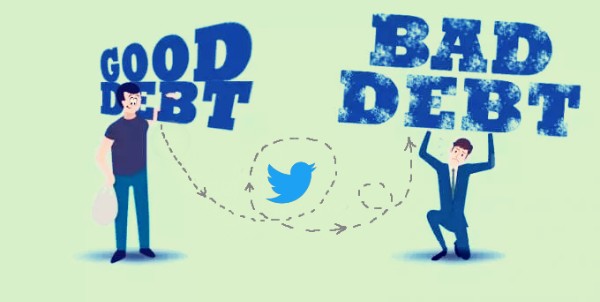Living a debt-free life has become somewhat impossible these days. Today, most of us easily default on our monthly mortgage bills, student loans and other utility bills. The reason being that we have let debt go out of our control. We have lavishly exploited our credit cards to the fullest not knowing what was going to happen in future. Actually, it's very simple to play with credit cards as by using them you can easily spend above your means. Therefore, avoid falling in debt at any cost should be the prime motto as going in debt means just depleting your emergency cash reserves.
However, by reading the above you can easily assume that all debt is bad debt. No, that's not the case. The challenge is simply knowing the good debt, the bad debt, and the difference between them. You should know which debt makes sense and which does't.
What is Good debt?
According to Eric Gelb, CEO of Gateway Financial Advisors, "Good debt is investment debt that creates value; for example, student loans, real estate loans, home mortgages and business loans."
Actually, good debt includes anything you badly need but can't afford if you don't exploit your cash reserves or liquidate some or all your assets. However, if the debt makes sense, think whether or not the monthly payments will be affordable to you before you take out the loan.
Example: For example, having a mortgage, getting a home equity loan to remodel your home, getting a federal or private student loan to attend college, using cash reserve to invest in the real estate, a business loan to enhance your factory's production are treated as good debt as these debts certainly help you in the long run.
What is a Bad debt?
Bad debts are such debts that don't help your finances in any way. If you are borrowing things that you don't need and moreover can't afford (a vacation to Hawaii, for instance), such debts will be taken as bad debt.
Example: Financing the remodeling of your car, using credit cards to shop, buying CDs, celebrating a festival (Christmas, for instance), are typical examples of bad debt. You might not know the worst form of debt is credit card debt since it usually charges the highest interest rates.
Ask the following three questions to yourself before taking out a loan.
- Are you going to bear huge interest rate with the purchase?
- Is this purchase going to preserve or help your finances grow?
- Is the purchase really a necessity and urgency?
Therefore, know your necessity and urgency before your take out any new loan. Though it's not as easy as it seems, but understanding the basic difference could prove to be significant.








